Cover
Universitext
Functional Analysis, Sobolev Spaces and Partial Differential Equations
Copyright
9780387709130
Preface
Contents
1. The Hahn–Banach Theorems. Introduction to the Theory of Conjugate Convex Functions
1.1 The Analytic Form of the Hahn–Banach Theorem: Extension of Linear Functionals
1.2 The Geometric Forms of the Hahn–Banach Theorem: Separation of Convex Sets
1.3 The Bidual Ε^{**}. Orthogonality Relations
1.4 A Quick Introduction to the Theory of Conjugate Convex Functions
Comments on Chapter 1
Exercises for Chapter 1
2. The Uniform Boundedness Principle and the Closed Graph Theorem
2.1 The Baire Category Theorem
2.2 The Uniform Boundedness Principle
2.3 The Open Mapping Theorem and the Closed Graph Theorem
2.4 Complementary Subspaces. Right and Left Invertibility of Linear Operators
2.5 Orthogonality Revisited
2.6 An Introduction to Unbounded Linear Operators. Definition of the Adjoint
2.7 A Characterization of Operators with Closed Range. A Characterization of Surjective Operators
Comments on Chapter 2
Exercises for Chapter 2
3. Weak Topologies. Reflexive Spaces. Separable Spaces. Uniform Convexity
3.1 The Coarsest Topology for Which a Collection of Maps Becomes Continuous
3.2 Definition and Elementary Properties of the Weak Topology σ(E,E*)
3.3 Weak Topology, Convex Sets, and Linear Operators
3.4 The Weak* Topology σ(E*,E)
3.5 Reflexive Spaces
3.6 Separable Spaces
3.7 Uniformly Convex Spaces
Comments on Chapter 3
Exercises for Chapter 3
4. L^p Spaces
4.1 Some Results about Integration That Everyone Must Know
4.2 Definition and Elementary Properties of L^p Spaces
4.3 Reflexivity. Separability. Dual of L^p
4.4 Convolution and regularization
4.5 Criterion for Strong Compactness in L^p
Comments on Chapter 4
Exercises for Chapter 4
5. Hilbert Spaces
5.1 Definitions and Elementary Properties. Projection onto a Closed Convex Set
5.2 The Dual Space of a Hilbert Space
5.3 The Theorems of Stampacchia and Lax–Milgram
5.4 Hilbert Sums. Orthonormal Bases
Comments on Chapter 5
Exercises for Chapter 5
6. Compact Operators. Spectral Decomposition of Self-Adjoint Compact Operators
6.1 Definitions. Elementary Properties. Adjoint
6.2 The Riesz–Fredholm Theory
6.3 The Spectrum of a Compact Operator
6.4 Spectral Decomposition of Self-Adjoint Compact Operators
Comments on Chapter 6
Exercises for Chapter 6
7. The Hille–Yosida Theorem
7.1 Definition and Elementary Properties of Maximal Monotone Operators
7.2 Solution of the Evolution Problem du/dt + Au = 0 on [0,+∞), u(0) = u_0. Existence and uniqueness
7.3 Regularity
7.4 The Self-Adjoint Case
Comments on Chapter 7
8. Sobolev Spaces and the Variational Formulation of Boundary Value Problems in One Dimension
8.1 Motivation
8.2 The Sobolev Space W^{1,p}(I)
8.3 The Space W^{1,p}_0
8.4 Some Examples of Boundary Value Problems
8.5 The Maximum Principle
8.6 Eigenfunctions and Spectral Decomposition
Comments on Chapter 8
Exercises for Chapter 8
9. Sobolev Spaces and the Variational Formulation of Elliptic Boundary Value Problems in N Dimensions
9.1 Definition and Elementary Properties of the Sobolev Spaces
9.2 Extension Operators
9.3 Sobolev Inequalities
9.4 The Space W^{1,p}_0(Ω)
9.5 Variational Formulation of Some Boundary Value Problems
9.6 Regularity of Weak Solutions
9.7 The Maximum Principle
9.8 Eigenfunctions and Spectral Decomposition
Comments on Chapter 9
10. Evolution Problems: The Heat Equation and the Wave Equation
10.1 The Heat Equation: Existence, Uniqueness, and Regularity
10.2 The Maximum Principle
10.3 The Wave Equation
Comments on Chapter 10
11. Miscellaneous Complements
11.1 Finite-Dimensional and Finite-Codimensional Spaces
11.2 Quotient Spaces
11.3 Some Classical Spaces of Sequences
11.4 Banach Spaces over \mathbb{C}: What Is Similar and What Is Different?
Solutions of Some Exercises
Problems
Partial Solutions of the Problems
Notation
References
Index
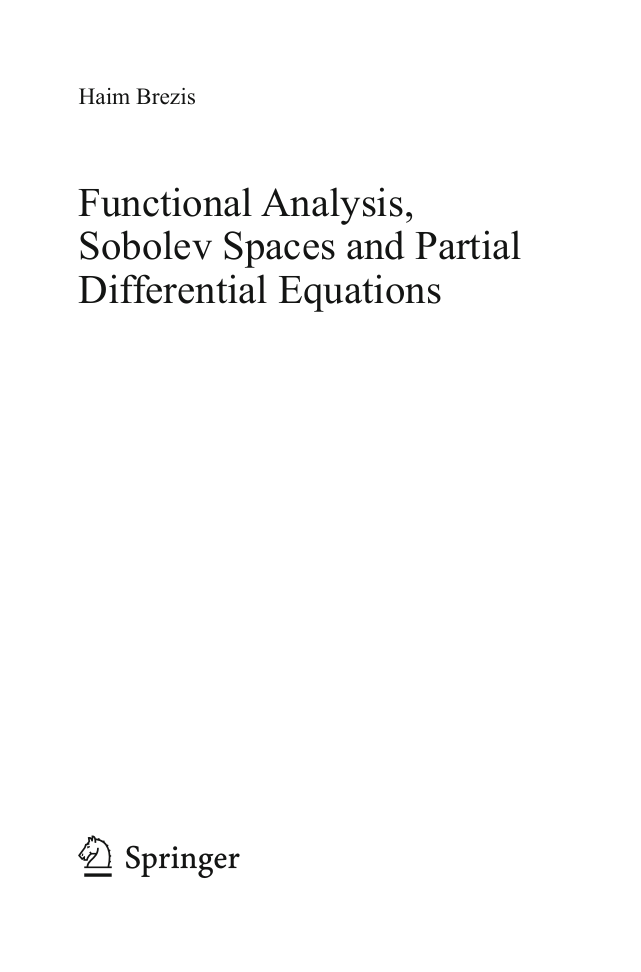
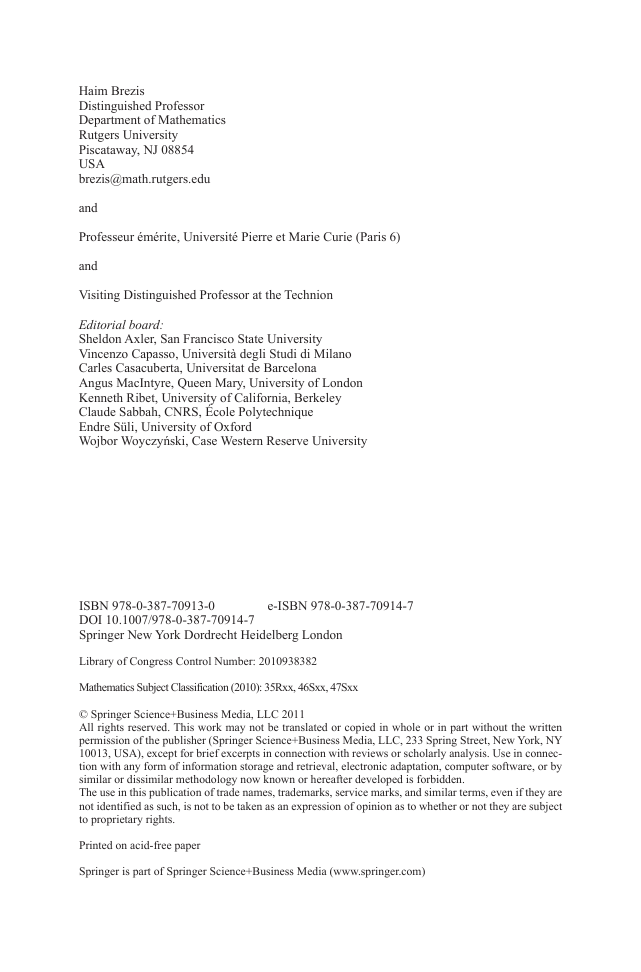


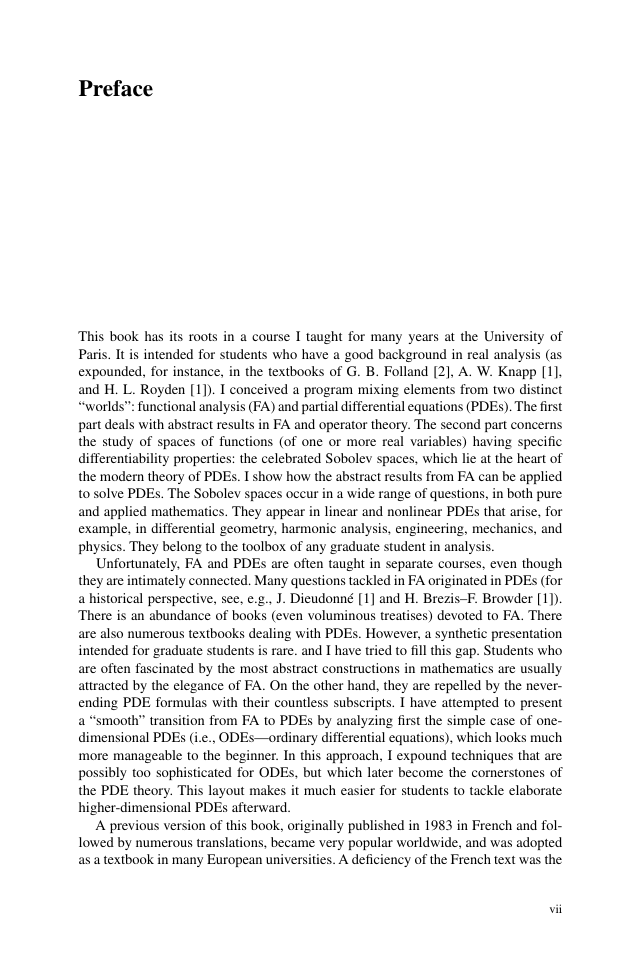
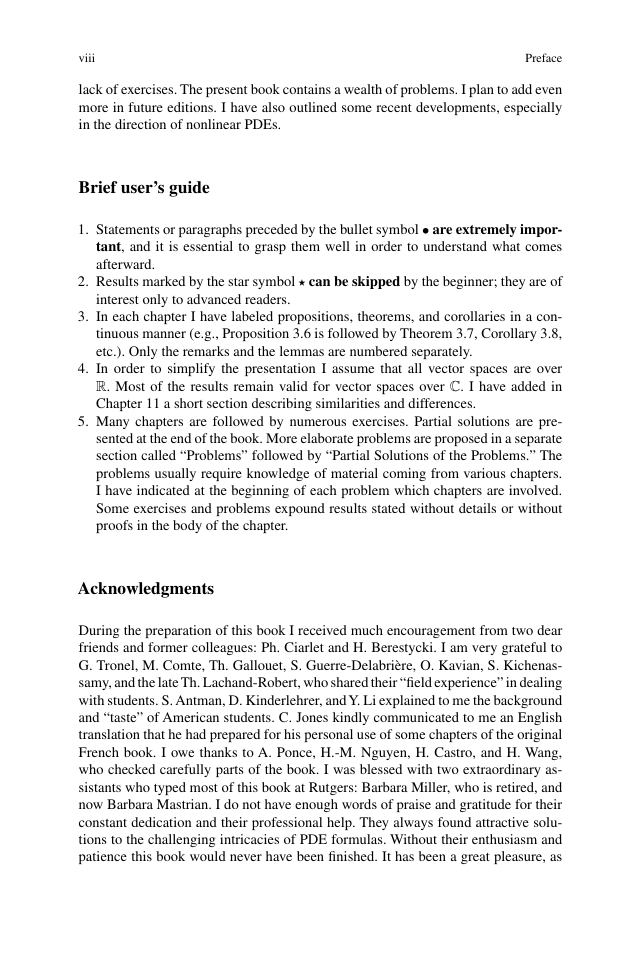
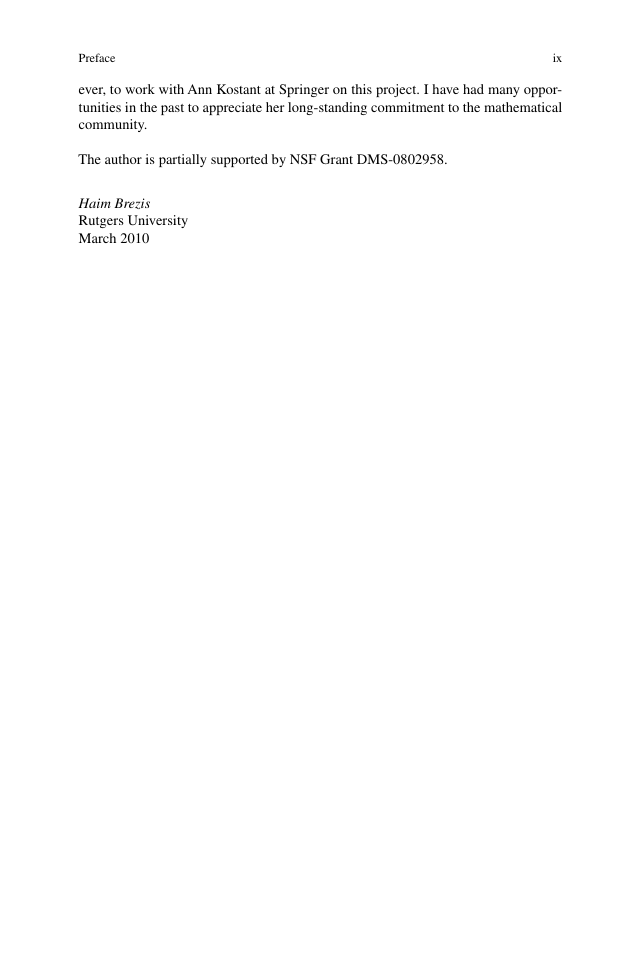









 2023年江西萍乡中考道德与法治真题及答案.doc
2023年江西萍乡中考道德与法治真题及答案.doc 2012年重庆南川中考生物真题及答案.doc
2012年重庆南川中考生物真题及答案.doc 2013年江西师范大学地理学综合及文艺理论基础考研真题.doc
2013年江西师范大学地理学综合及文艺理论基础考研真题.doc 2020年四川甘孜小升初语文真题及答案I卷.doc
2020年四川甘孜小升初语文真题及答案I卷.doc 2020年注册岩土工程师专业基础考试真题及答案.doc
2020年注册岩土工程师专业基础考试真题及答案.doc 2023-2024学年福建省厦门市九年级上学期数学月考试题及答案.doc
2023-2024学年福建省厦门市九年级上学期数学月考试题及答案.doc 2021-2022学年辽宁省沈阳市大东区九年级上学期语文期末试题及答案.doc
2021-2022学年辽宁省沈阳市大东区九年级上学期语文期末试题及答案.doc 2022-2023学年北京东城区初三第一学期物理期末试卷及答案.doc
2022-2023学年北京东城区初三第一学期物理期末试卷及答案.doc 2018上半年江西教师资格初中地理学科知识与教学能力真题及答案.doc
2018上半年江西教师资格初中地理学科知识与教学能力真题及答案.doc 2012年河北国家公务员申论考试真题及答案-省级.doc
2012年河北国家公务员申论考试真题及答案-省级.doc 2020-2021学年江苏省扬州市江都区邵樊片九年级上学期数学第一次质量检测试题及答案.doc
2020-2021学年江苏省扬州市江都区邵樊片九年级上学期数学第一次质量检测试题及答案.doc 2022下半年黑龙江教师资格证中学综合素质真题及答案.doc
2022下半年黑龙江教师资格证中学综合素质真题及答案.doc